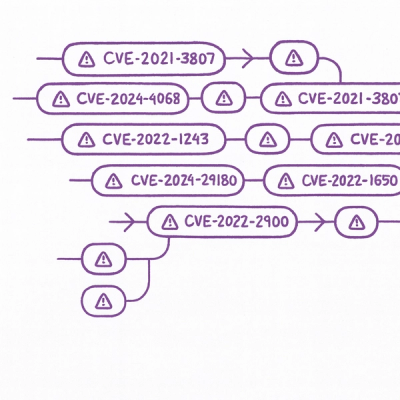
Security News
Astral Launches pyx: A Python-Native Package Registry
Astral unveils pyx, a Python-native package registry in beta, designed to speed installs, enhance security, and integrate deeply with uv.
This package provides a VR tailored eye-tracking classification algorithm for identifying fixations and saccades in data gathered from VR headsets.
The algorithm was initially proposed and implemented by Jose Llanes-Jurado, Javier Marín-Morales, Jaime Guixeres, and Mariano Alcañiz in their paper, Development and Calibration of an Eye-Tracking Fixation Identification Algorithm for Immersive Virtual Reality.
Code from the original authors is here github/ASAPLableni.
Install this package using pip (Python virtual environments).
$ pip install vr-idt
def classify_fixations(df: pd.DataFrame,
min_duration: float = 0.15,
max_angle: float = 1.50,
min_freq: float = 30.0,
time: str = "time",
gaze_world_x: str = "gaze_world_x",
gaze_world_y: str = "gaze_world_y",
gaze_world_z: str = "gaze_world_z",
head_pos_x: str = "head_pos_x",
head_pos_y: str = "head_pos_y",
head_pos_z: str = "head_pos_z") -> pd.DataFrame:
"""Classify VR eye fixation events in eye-tracking data.
Args:
df: DataFrame with eye tracking data to classify
min_duration: The minimum length of a fixation in seconds
max_angle: The maximum angle of dispersion within the fixation within
min_freq: The minimum required frequency for a fixation to be classified
time: df column name for time (sec) data
gaze_world_x: df column name for gaze position in virtual world data
gaze_world_y: df column name for gaze position in virtual world data
gaze_world_z: df column name for gaze position in virtual world data
head_pos_x: df column name for head position in physical space data
head_pos_y: df column name for head position in physical space data
head_pos_z: df column name for head position in physical space data
Returns:
fixation_df: Copy of original arg 'df' with 4 new fixation related columns:
"fixation", "fixation_start", "fixation_end", and "fixation_duration"
"""
import pandas as pd
from vr_idt.vr_idt import classify_fixations
# Load in data with eye tracking data
df = pd.read_csv("<path/to/data>")
# Setup a column name mapping so algorithm knows where to look for necessary data
col_name_map = {
"gaze_world_x": "Gaze Pos X (world)",
"gaze_world_y": "Gaze Pos Y (world)",
"gaze_world_z": "Gaze Pos Z (world)",
"head_pos_x": "Head Pos X",
"head_pos_y": "Head Pos Y",
"head_pos_z": "Head Pos Z"
}
# Define some parameters
min_duraion = 0.15
max_angle = 1.5
min_freq = 25
# Run algorithm and add 4 fixation related columns to df
df = classify_fixations(df, min_duration, max_angle, min_freq, **col_name_map)
FAQs
Virtual reality eye tracking event classification algorithm
We found that vr-idt demonstrated a healthy version release cadence and project activity because the last version was released less than a year ago. It has 1 open source maintainer collaborating on the project.
Did you know?

Socket for GitHub automatically highlights issues in each pull request and monitors the health of all your open source dependencies. Discover the contents of your packages and block harmful activity before you install or update your dependencies.

Security News
Astral unveils pyx, a Python-native package registry in beta, designed to speed installs, enhance security, and integrate deeply with uv.

Security News
The Latio podcast explores how static and runtime reachability help teams prioritize exploitable vulnerabilities and streamline AppSec workflows.

Security News
The latest Opengrep releases add Apex scanning, precision rule tuning, and performance gains for open source static code analysis.